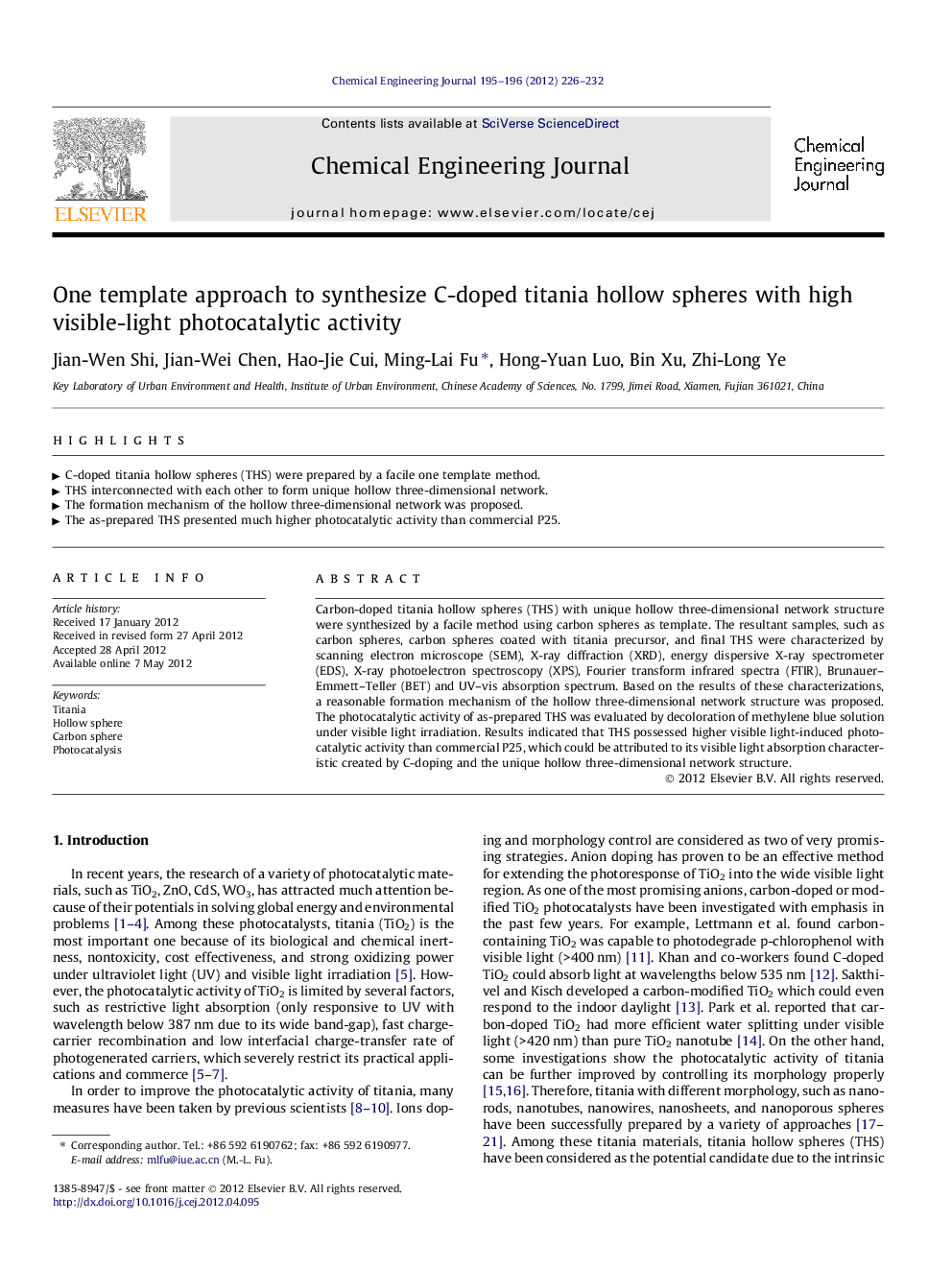| Article ID | Journal | Published Year | Pages | File Type |
|---|---|---|---|---|
| 149751 | Chemical Engineering Journal | 2012 | 7 Pages |
Carbon-doped titania hollow spheres (THS) with unique hollow three-dimensional network structure were synthesized by a facile method using carbon spheres as template. The resultant samples, such as carbon spheres, carbon spheres coated with titania precursor, and final THS were characterized by scanning electron microscope (SEM), X-ray diffraction (XRD), energy dispersive X-ray spectrometer (EDS), X-ray photoelectron spectroscopy (XPS), Fourier transform infrared spectra (FTIR), Brunauer–Emmett–Teller (BET) and UV–vis absorption spectrum. Based on the results of these characterizations, a reasonable formation mechanism of the hollow three-dimensional network structure was proposed. The photocatalytic activity of as-prepared THS was evaluated by decoloration of methylene blue solution under visible light irradiation. Results indicated that THS possessed higher visible light-induced photocatalytic activity than commercial P25, which could be attributed to its visible light absorption characteristic created by C-doping and the unique hollow three-dimensional network structure.
► C-doped titania hollow spheres (THS) were prepared by a facile one template method. ► THS interconnected with each other to form unique hollow three-dimensional network. ► The formation mechanism of the hollow three-dimensional network was proposed. ► The as-prepared THS presented much higher photocatalytic activity than commercial P25.
